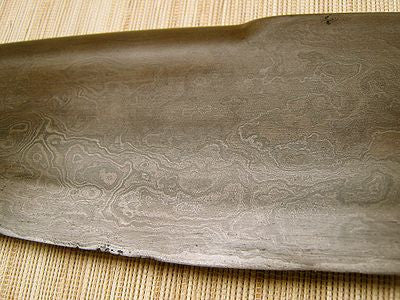Tu carrito está vacío


Traditional Korean and Japanese swords aren't made with a single piece of metal, but rather multiple pieces of metal. This allows for a more even distribution of carbon and other compounds within the metal.
The term "pattern welding" refers to the process of forging a sword or blade using multiple pieces of metal with differing composition, twisting them together to create a pattern.
Origins of Pattern Welding
Pattern welding has roots dating back to the 2nd century AD. Historians believe that the Celts were among the first civilizations to use this technique in their metal work.
Swordsmiths needed to make blades that were tough, durable and strong. At the time, however, conventional bloomeries weren't effective for this purpose. Bloomeries didn't produce enough heat to melt metals such as iron and steel, essentially reducing them into particles of pure iron. The swordsmith would then collect and weld these particles into a large mass consisting of mostly pure iron. Of course, pure iron is too soft for swords, knives and other cutting instruments, so the swordsmith would carburize plates together to form of a layer of hardened carbon steel. The swordsmith would then forge these plates together to create bars of steel.
Known as laminating, different types of steel with varying patterns were created in the finished product. This is essentially how pattern welding is performed.
Goal of Pattern Welding
Some people assume that pattern welding is done strictly for aesthetic purposes, but this isn't necessarily true. While it does provide a stylish, unique appearance, the process offers functional benefits as well.
As previously stated, pattern welding was invented out of need for stronger, harder blades. Early-era bloomeries produced weak iron, which was anything but ideal for use in swords and knives. So, swordsmiths and metal workers would carburize iron plates, rods and bars to produce a steel with a higher carbon content. Forging multiple layers of these high-carbon steel bars is the basis on which pattern welding is done.
Enhancing the Pattern
There are different ways for swordsmiths to enhance the appearance of their patterns, one of which is polishing. A skilled polisher can eliminate external impurities from the blade so the metal's pattern is more visible.
Another process used to enhance the pattern of a blade is acid etching. With acid etching, a highly acidic chemical is applied to the surface of the blade, essentially wearing away some of the outer layer.